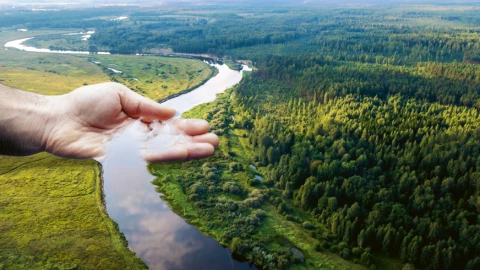Theory of Change
Together with the Dutch Impact Institute, we conducted an impact assessment for our holdings in the agrifood sector, an investment domain in which we invest directly and through funds. “We wanted to gain insight into the following: could we measure and quantify for example the social impact of an investment in a company that combats hunger or the environmental impact of the investment in a company that delivers an energy-saving technology? Could we calculate the impact for every euro invested and from that derive our impact-return or impact multiple of money?”
We defined impact as the difference we make by having an effect on things valued in society. This means developing an understanding of the contribution of an activity or product to the welfare and well-being and the protection of fundamental human rights of stakeholders in our value chain.
Impact Measurement and Valuation can become quite complex and demanding, so we first had to establish the scope of impacts to be measured. To support this, we first defined a Theory of Change. This is a method that explains how certain initiatives lead to specific changes or impacts. The theory relies on causal research and available evidence. In this way, the framework maps out ‘the missing middle’: the link between our initiatives and our long-term goals. Within the Agrifood domain, we focused on three concrete themes at that time: (1) regenerative agriculture, (2) the protein transition and (3) food waste. All these themes contribute to combating climate change, reducing land and water use and restoring biodiversity, which were the impacts that we decided to measure and quantify.
Challenges in data availability
In a second phase, we selected a number of companies in the agrifood portfolio across multiple asset classes and tried to quantify the impacts in scope. For each company, we developed an understanding of their business and value creation model to determine how they contributed to the impacts. Based on this understanding, we identified the impact drivers and data points that we needed to calculate the impact. By calculating both our relative and absolute impact and comparing them side by side, we wanted to quantify our overall impact. By relative impact, we mean the difference in impact compared to a reference scenario, e.g. the avoided CO2 emissions compared to a reference project.
Unfortunately, we ran into some challenges in the calculations. For instance, data collection proved to be a major challenge due to the reluctance of fund managers and/or lack of data points at the companies. Moreover, data on the reference scenario was often incomplete. We also have startups in our portfolio that are not yet bringing products to market and therefore do not yet have a measurable impact. There were also many companies with enabling technologies: companies that have impact further down the chain. The problem there is that the user data from those chain partners is not readily available.
Whilst certain predictions could be made based on available proxy-data and potential scenarios, our preference was to have granular company-level data as much as possible.
Interesting exercise
“Given the challenges in data availability and the diversity of our investment portfolio, a bottom-up impact measurement of all the companies in our portfolio – about six hundred – is currently not feasible”, says Jobien Laurijssen, Sustainability Manager. "For some asset classes, for example, direct Private Equity investments more data was available, but, in a fund-of-fund structure we have a lot less access to the data we need. We will therefore, put the detailed quantitative impact approach on hold for now, until the data availabilty challenges are addressed and retain our current impact indicators as a measure to assess the impact of our Agrifood investments.”
"Still, it was an interesting thought exercise; we still agree on the basic principles. Quantifying the impact of an investment requires a detailed understanding of a company's business and value creation model and the markets it operates in. This thinking helps us in our investment decisions and company engagements. We will, for example, establish a Theory of Change and focus on a number of themes within a domain. We will also select specific impact metrics derived from impact pathway thinking in our upcoming investment decisions and in our journey towards a new strategy. We have already started a Theory of Change related to real estate.”
“One last conclusion we draw from the exercise is that it is important to keep looking for areas where you can make a difference, and do this in a holistic way”, says Astrid Leyssens, Sounding board on Sustainable Progress. “Taking again the example of hunger alleviation, it is crucial to also take into account soil rehabilitation, drought, pollution and so on. You must therefore invest your capital in various projects that address the problem in a systemic way. We believe an investor needs to explore multiple impact pathways to identify additional impact drivers. We understand that this can complicate strategy and impact measurement, but the world's great challenges demand creative and holistic problem-solving and we are committed to contributing to that.”





